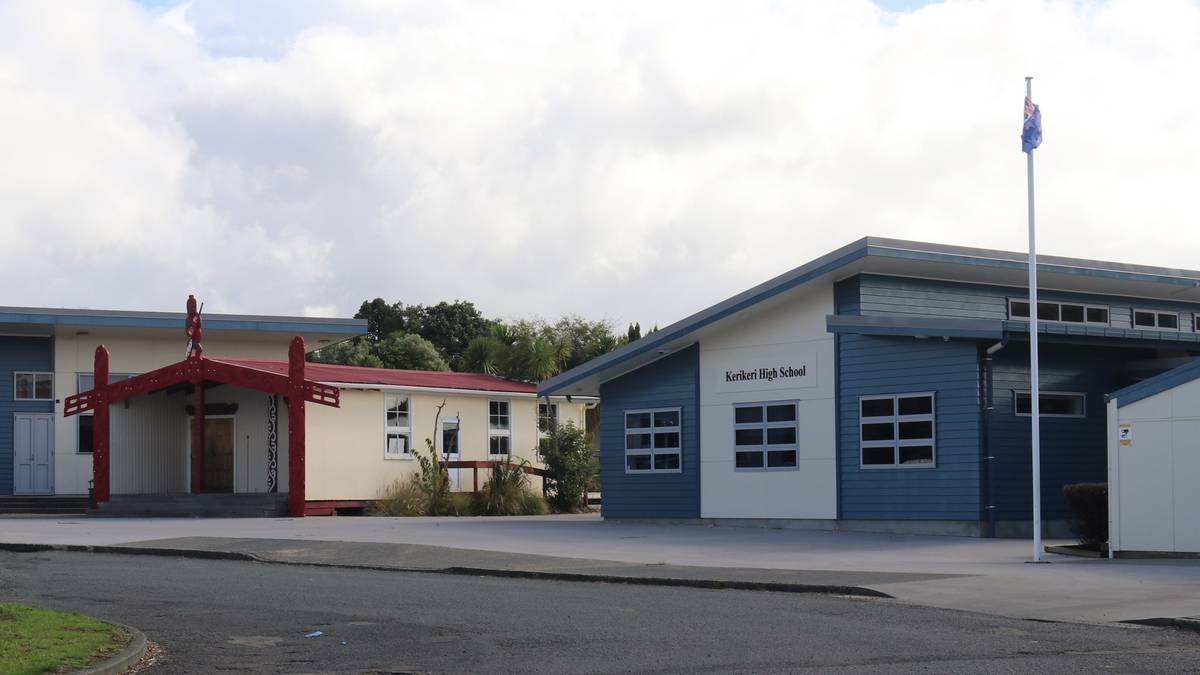Almost a third of students at Kerikeri High School are off sick due to the “twindemic” of Covid-19 and the flu. Photo / Peter de Graaf
Northland schools hit hard by a “twindemic” of Covid-19 and winter illnesses hope the upcoming winter break will be a circuit-breaker that stops the spread of viral infections.
The region’s biggest school, 1500-student Kerikeri High,
has been forced to roster a different year group home each day because so many teachers have been taken ill. The same measure was used at the height of the Omicron outbreak.
Principal Elizabeth Forgie said about 30 per cent of students were off sick or isolating.
The number of staff affected varied day by day but on the worst day of the past fortnight, 30 of the school’s 90 teachers were at home because they were ill, self-isolating, or caring for sick family members.
As a result, from June 20 the school had been forced to go back to rostering one year group at home each day.
Year 13s were not included because they were in their crucial final year and now facing their third year of disruption.
The school was “very, very grateful” to its relief teachers and permanent staff, who were looking out for colleagues’ classes and keeping up with students who weren’t able to attend school.
That had allowed students as much continuity as possible.
Forgie said she was also grateful to parents who kept the school informed about their children’s absences.
/cloudfront-ap-southeast-2.images.arcpublishing.com/nzme/NXU3LRNVXM4BZEJOSLC2XRCN7Y.jpg)
Associate principal Mike Clent said the number of staff and students affected was roughly the same as during the Omicron outbreak.
The current double whammy of Covid and flu was, however, more difficult to deal with because the numbers were so uneven and unpredictable.
Absences were about half-and-half due to Covid and the flu.
Forgie said the school was focusing on “what we can do, not what we can’t do”, the same mindset adopted during previous Covid outbreaks.
That meant going ahead with anything that could be done safely, such as Tuesday night’s Year 11 production, the Year 12 production two weeks earlier, and Year 8’s wānanga at Whitiora Marae.
Earlier in the year, when the annual Year 7 camp on Urupukapuka wasn’t possible, the students were taken on a series of action-packed day trips to the island instead.
While some schools had opted to close for one or two weeks in a bid to break the transmission cycle, Forgie believed rostering students to study at home one day a week was less disruptive.
If the school closed there was also a risk some students would not return.
“We are mindful that we have to be a rock for the students. We’re focused on being a calm, caring, kind place our students can rely on.”
Forgie “definitely” hoped the upcoming break would help. The school would reassess once classes restarted in just over two weeks’ time.
Under the orange setting masks at schools were optional.
They were, however, required on buses, in large gatherings, in poorly ventilated spaces or when distancing was not possible.
Forgie said the current situation was unprecedented in her 34 years at the school, but not unknown to previous generations.
Her father, now 94, and his schoolmates had been forced to stay home until Easter one year due to a polio outbreak.
/cloudfront-ap-southeast-2.images.arcpublishing.com/nzme/DSRHGUT6P45N3WUFKJBJAXJCQQ.jpg)
Meanwhile, Dargaville High School principal Michael Houghton said it wasn’t just Covid keeping students away.
Various illnesses — including tummy bug, flu and long Covid — coupled with long weekends had led to low student attendance in term 2.
With regard to staff, the school was able to meet expectations and cover classes.
“What we are finding is a lot of students who have had Covid-19 come back and then they get hit back by the flu, which takes quite a while for them to recover.”
Houghton said the school was working with families and the Ministry of Education for students who had not returned or whose attendance had been sporadic.
“Overall we seem to be tracking all right and certainly everyone is looking forward to the holidays. They will grant us a bit of break and the opportunity to regroup, and hopefully everyone will be much better next term.”
The school was “strongly suggesting” students wear masks but it was different from the beginning of the year when mask-wearing was mandated.
“We have got plenty of masks available and there are students who continue to wear them along with most staff,” Houghton said.
“Since the start of the pandemic, we have been just adjusting what we do to fit the current requirements. We keep a close eye on what’s happening and support our students as best as we can.”
Whangārei Intermediate principal Hayley Read told RNZ about 100 students were absent every day.
“The Government’s been really insistent on ‘if you’re not feeling well don’t come to school’, and our whānau are taking that to heart and making sure they’re not sending their children to school unwell.”
However, the school knew of children who were not attending for various other reasons.
On Wednesday this week 10,290 new community cases of Covid were reported across New Zealand. It was the first time since April the number had passed 10,000, signalling a second wave is under way.




